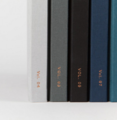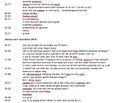DigitalCraft Wiki:Facebook book
Starting Point
My starting point is a project from quarter nine: Future Memories. This project, given by Jon, was about creating a medium, design or technology to mediate either visual, echoic of haptic memories. One of the realisations I got during this project was that a lot of my memories are collected on Facebook. Confronting, but true. Some of them are actually very meaningful to me. Most of the memories are captured in pictures but also places where I've been, events where I went to and messages that I received are examples that I would like to keep with me. Would it be possible to take the content of Facebook offline and translate it to a more memorable way. This is what formed my research question:
In what way is it possible to take valuable content offline from Facebook, and translate it into a long lasting memorable way?
Design Research
I started of with looking at the 'printing out facebook' market. There must be people who already have done it before me. And indeed. There were several companies who also saw the trend coming and reacted on it. Blurb for example, one of the better known 'making book sites', gives the option to load all your Facebook pictures into a book, including the reactions that friends placed underneath the picture. Blurb made this also possible for other social media like Flickr and Blogger. EgoBook is another example, which is created from your status updates, posted and tagged photos, wall posts, links & comments as well as content from friends you select. It is a very personalized book and a clear layout with the recognizable Facebook style. And of course, a lot of online companies but also stores like HEMA are giving the option to print out the pictures you placed on social media like Facebook or Instagram. But only the pictures is not what I am looking for. I find the challenge in designing a way where the online life comes offline in it's complete way: including time - date - location - who - what - why. More in the direction of an old school journal, but the with the speed of collecting like the online social media.
An example of who comes closer to the idea that I have in my head is YearlyLeaf. They call themselves an experiment in social permanence. They translate your Facebook updates, posts and check-ins into a timeless book: a black notebook like Moleskine. The one that is famous for being used by artists and philosophers like Oscar Wilde, Picasso, and all of us studying at the Willem de Kooning. A timeless appeal, precious and valuable. An website which I found: artifact uprising, has in my eyes the perfect example of what a photobook nowadays should look like. It would be ideal if this could be combined with the content of Facebook. A clean modern design, well organized, with all the precious content Facebook collects for us with only minimal energy from our side.
photo 1: YearlyLeaf -- photo #2: YearlyLeaf -- photo #3: Artifact Uprising -- photo #4: Book of Fame
Design Proces
Next step
From our findings we created a publication. A book full of poems and polaroid pictures. The ordinary daily life summed up in our own words. The reactions were very nice. People were surprises by our writing and did not even think about the things that we wrote down. In the end this was a very helpful way of researching, and a good starting point for this project. From here we came up with the idea to do something with the amount of typing that we do nowadays. Because we experienced that it takes a lot of time with the typewriter during our research, but actually we type the whole day long nowadays but it is designed so well now that you don't realize anymore that it is actually a action that might take some time.
And that is why we started to collect everything we type on one day in our phone. In Whatsapp. Because that is the app we both use the most. We collected this, and we wrote and typed it out. To feel again how much we actually write on one single day.
While doing this, we came up with an idea for the final design. We found it very interesting that typing goes so fast, and writing so slow, while actually you have the same result. Back in the old days the had nothing else than pen and paper, but now we are all used to the typing on our digital divices But what if typing will take the time that it does by handwriting. Then it is still the same action, but the time from the actual action. With this idea we want to make a statement. That we must not forget that almost everything digital and superfast nowadays is inspired on something from way back. And that we should not forget how precious this is. So that we should sometime think a little bit longer before we send just random messages. Because now the message is actually sometimes lost.












